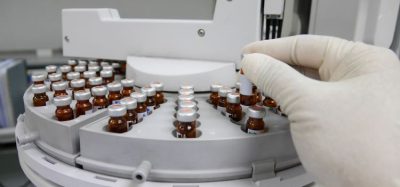What does quality mean to you?
Posted: 3 July 2014 | David Elder (JPAG member and consultant) | No comments yet
An effective quality risk management (QRM) process ensures proactive identification and control of potential issues that may arise during development and commercialisation. Where quality is defined as the degree to which a set of intrinsic properties of a drug product, its underpinning manufacturing process, and any supporting processes fulfils the pre-determined criteria.
However, several commentators have reflected that quality per se is difficult to define, i.e. ‘definitions are a product of rigid formal thinking, thus quality cannot be defined’. Conversely, quality does need to be adequately defined to meet the future needs of the customer. Quality also has multi-factorial attributes ensuring that quality can never be adequately defined in terms of a single characteristic. Juran (1992) defines quality as fitness for use and freedom from deficiencies. Interestingly, quality is defined by ICH Q6A as fitness for use, whilst ICH Q91 defines quality as conformance to requirements. Montgomery (2001) indicated that ‘quality is inversely proportional to variability’.
Quality cannot be addressed by solving manufacturing issues as and when they occur, and indeed this is not a sensible use of valuable resources. Neither can quality be tested into a product (Quality by Testing). Quality must therefore be designed into the product. Regulatory bodies have subsequently embraced this concept, i.e. quality by design. Quality should be built into any pharmaceutical product based on an in-depth understanding of the product, the supporting manufacturing process and the underpinning development process. ICH Q6A indicates that ‘the quality of drug substances and drug products is determined by their design, development, in-process controls, GMP controls, and process validation, and by specifications applied to them throughout development and manufacture’.
Perhaps quality is best defined from the patient’s perspective as fitness for purpose, i.e. the product is suitable for the intended purpose8. However, the patient is rarely able to discern the quality of the product; with the obvious exceptions of certain customer complaints9. For example, consumers’ willingness to purchase prescription drugs from the Internet, despite limited (if any) assurances of product quality10. Indeed, patients typically seek effective, safe and affordable drugs (not always in that order), and all other considerations, e.g. appearance, taste, smell, etc., are secondary. The economic cost of quality is therefore not determined by consumer demand but by governmental oversight. Therefore, QRM has the primary objective of safeguarding the patient from harm by minimising (but not necessarily eliminating) the risk(s) to quality of the drug product.
However, it is also important to address the issue of quality from a global perspective, as the availability of poor quality medicines in both the developing and developed worlds is a significant public health issue. Concerns include absence of active, sub-potent, supra-potent, or presence of the wrong active ingredient, contamination, poor quality components, poor quality manufacturing sites, inadequate stability and inappropriate packaging. In these developing countries, drugs produced for export are typically not regulated to the same standards as those intended for internal use, whilst regulatory agencies in the developing world are inadequately equipped to monitor and control the problem.
However, it often seems that there is too much discussion about quality concepts without an adequate understanding of what quality actually means. A recent product recall relating to the presence of noxious odours in a medicinal product, highlight the complex, multivariate nature of QRM. The problem was identified as arising from accidental contamination of the product with tribromoanisole, TBA11. However, TBA was not a drug product degradant, nor an extractable from the container closure system, but was identified as a volatile contaminant arising from the wooden pallets that were used to ship the product to the wholesaler. The wooden pallets were sprayed with a fungicide to promote longer life, but the fungicidal agent had degraded to form TBA, which due to its high volatility could easily migrate across the HDPE containers into the product. Thus all of that company’s focus on developing quality products was negated by an ‘insignificant’ decision further down the supply chain. It is always worth recalling in any quality environment that small actions can result in large consequences, as highlighted by the old adage, ‘For Want of a Nail’.
References
- ICH Q9, current step 4, 2005. Quality Risk Management. http://www.ich.org/fileadmin/Public_Web_Site/ICH_Products/Guidelines/Quality/Q9/Step4/Q9_Guideline.pdf. Accessed on 12th January 2014.
- Pirsig RM. 1974. Zen and the art of motorcycle maintenance. William Morrow, New York.
- Korakianti E, Rekkas D. 2011. Statistical thinking and knowledge management for quality-driven design and manufacturing in pharmaceuticals. Pharmaceutical Research. 28; 1465-1479.
- Montgomery DC. 2001. Introduction to statistical quality control. John Wiley & Sons, New Jersey.
- Juran JM. 1992. Juran on quality by design: The new steps for planning quality into goods and services. Free, New York.
- ICH Q6A, current step 4 version. 1999. Specifications: Test procedures and acceptance criteria for new drug substances and new drug products: Chemical substances. http://www.ich.org/fileadmin/Public_Web_Site/ICH_Products/Guidelines/Quality/Q6A/Step4/Q6Astep4.pdf. Accessed on 28th January 2014.
- ICH Q8 (R2), current step 4 version. 2009. Product Development. http://www.ich.org/fileadmin/Public_Web_Site/ICH_Products/Guidelines/Quality/Q8_R1/Step4/Q8_R2_Guideline.pdf. Accessed on 12th January 2014.
- 2006. Annex 4. Supplementary guidelines on good manufacturing practices: validation. WHO Technical Report Series, No. 937. http://www.who.int/medicines/areas/quality_safety/quality_assurance/SupplementaryGMPValidationTRS937Annex4.pdf. Accessed on 25th January, 2014.
- Woodcock J. 2004. The concepts of pharmaceutical quality. American Pharmaceutical Review. 7; 10-15.
- 2007. FDA says consumers continue to buy risk drugs online. http://www.health.am/ab/more/fda-says-consumers-continue-to-buy-risky-drugs-online/. Accessed 25th January, 2014.
- Huang J-T, Alquier L, et al. 2012. Method development and validation for the determination of 2,4,6-tribromoanisole, 2,4,6-tribromophenol, 2,4,6-trichloroanisole, and 2,4,6-trichlorophenol in various drug products using stir bar sorptive extraction and gas chromatography-tandem mass spectrometry detection. Journal of Chromatography A. 1262; 196-204.





